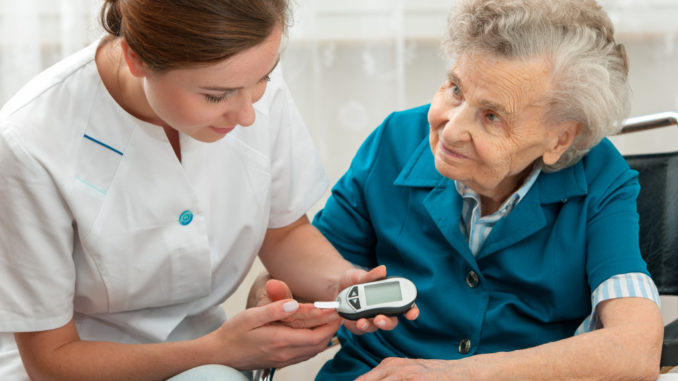
Over 30 million Americans have diabetes, although this figure could be grossly underestimated. Many remain undiagnosed. Usually, by the time they see a doctor, the symptoms are already moderate to severe, and they will require aggressive therapies to delay the progress of the disease.
But diagnosis is only one of the many challenges people with diabetes face every day. They also struggle with the following throughout their disease:
1. Glucose Testing
Contrary to popular belief, people with diabetes don’t just have to deal with high glucose levels. They also need to watch out for dangerously low ones that can lead to hypoglycemia. When not treated immediately, it can lead to unconsciousness or even death.
To do this, they need to monitor their glucose regularly – a critical step many unfortunately miss. One of the surveys by the American Diabetes Association (ADA) showed that over 20 percent of those with type 1 diabetes do not check their blood sugar. An overwhelming 76 percent of people with type 2 diabetes do not monitor their glucose levels.
Diabetes Self-Management outlines many reasons why this happens. In some cases, they forget to do it or find the process inconvenient.
Because regular monitoring is vital to delay the progress of the disease or manage it, those who struggle with this process might benefit from home nursing care. A nurse will visit the patient every day, perform the glucose test, and even remind the person of their medication intake.
2. Nerve Damage
According to the ADA, over 50 percent of people with diabetes have some form of nerve damage called diabetic neuropathy. People with this condition might feel numbness in their hands and feet, sharp pain from time to time, or lack of appetite.
It occurs when their blood glucose levels stay high for an extended period. Over time, high glucose causes inflammation and oxidation in the nerves, leading to nerve damage.
Nerve damage is difficult to treat, especially since many people with diabetes might not know they have it until it’s too late. The symptoms can be ignored or attributed to other conditions. It’s also often misdiagnosed as another condition, such as arthritis or anemia.
However, if the patient is aware of the possible signs and symptoms to look for, they can visit a professional to get tested for neuropathy to be managed before it gets worse. Common symptoms include :
- Tingling and numbness in the hands and feet
- Loss of sensation
- Muscle pain
- Weakness and fatigue
- Burning feeling at night
- Extreme sensitivity to temperature changes

3. Heart Disease and Hypertension
People with diabetes are at a higher risk of developing heart disease and hypertension. They also have a greater chance of dying from these conditions.
According to studies, about 90 percent of people with diabetes die due to cardiovascular complications within 10 years after diagnosis. When left unchecked, high glucose levels can trigger proteins to deposit on artery walls, leading to atherosclerosis. This makes it harder for blood to flow through, increasing the risk of heart attack and stroke.
People with uncontrolled diabetes are also at an increased risk for developing hypertension or high blood pressure. The CDC reports state that over 70 percent of people with diabetes have elevated blood pressure, which can cause kidney failure, blindness, loss of limbs, and death.
Diabetics who want to reduce their risk of cardiovascular complications should monitor their glucose levels closely, exercise regularly, eat well, maintain a healthy weight, and curb unhealthy habits like smoking. Taking medications for hypertension is also advised if needed.
4. Blindness and Eye Problems
People with diabetes are eight times more likely to develop blindness than those without type 2 diabetes. The National Eye Institute says that diabetics are at higher risk for developing severe vision impairment or blindness, even if they have no other eye-related problems like glaucoma.
The reason is elevated blood sugar levels damage tiny blood vessels in the retina, which can lead to blurry vision and eventually wet and dry macular degeneration.
In general, people need to have their eyes checked regularly between 1 and 5 years, depending on their age. However, those diagnosed with type 1 diabetes must undergo a comprehensive eye exam within five years. Type 2 diabetics, meanwhile, need to go through the same process as soon as they are diagnosed. After this, an eye exam becomes annual.
Uncontrolled diabetes comes with many possible consequences, which is why they need to visit a doctor regularly and take their medications. This condition doesn’t have to be managed with diet or exercise alone.
As always, though, one should consult a medical professional if they have questions or concerns about any aspects of their health.
